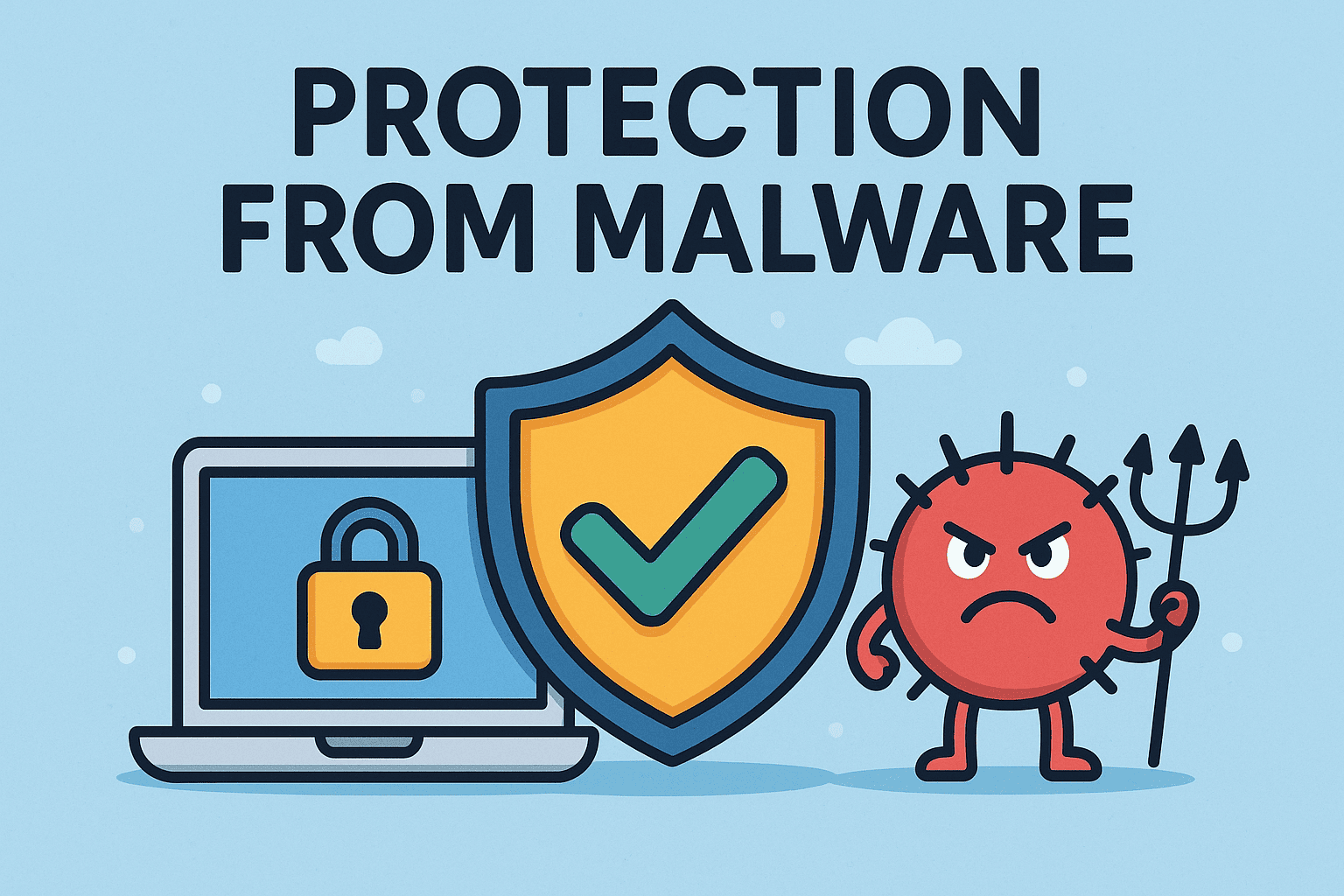Updated on October 8, 2025, by OpenEDR
Every 39 seconds, a cyberattack occurs somewhere in the world. From ransomware shutting down hospitals to spyware stealing corporate data, malware remains one of the most dangerous threats in cybersecurity. So how do you ensure your business or personal devices are safe? The answer lies in layered protection from malware.
Malware (short for malicious software) includes viruses, worms, ransomware, spyware, and Trojans that infiltrate devices to steal, damage, or lock data. Protecting against these threats isn’t just a technical issue—it’s a business survival strategy.
What Is Malware?
Before diving into protection from malware, it’s important to understand what malware is.
Types of Malware:
Viruses: Infect files and spread when shared.
Ransomware: Locks files and demands payment.
Spyware: Steals user data silently.
Trojans: Disguise as legitimate software but deliver malicious payloads.
Worms: Self-replicating programs that spread across networks.
👉 Each type requires a different prevention strategy, making comprehensive security vital.
Why Protection from Malware Is Critical
The financial and reputational damage from a malware attack can be devastating.
Risks of Malware Attacks:
Data Loss: Files corrupted or stolen.
Financial Theft: Banking and payment information compromised.
Business Disruption: Systems shut down, halting operations.
Reputational Damage: Loss of trust among clients and stakeholders.
Regulatory Penalties: Non-compliance with data protection laws.
For IT managers and CEOs, the cost of not investing in malware protection far outweighs the price of prevention.
Key Strategies for Protection from Malware
Effective malware protection requires a multi-layered approach.
1. Install Reliable Antivirus & Anti-Malware Tools
Use software virus protection with real-time scanning.
Keep it updated for new malware definitions.
2. Enable Firewalls
Blocks unauthorized access to networks.
Monitor both inbound and outbound traffic.
3. Regular Software Updates
Apply patches promptly.
Outdated systems are prime targets for exploits.
4. Secure Password Management
Use password management software.
Implement two-factor authentication (2FA).
5. Employee Training
Educate staff on phishing and suspicious downloads.
Awareness reduces human error vulnerabilities.
6. Data Backup Plans
Regularly back up files to cloud or offline storage.
Ensure quick recovery in case of ransomware attacks.
Malware Protection for Businesses
Enterprises face unique challenges with malware protection due to larger attack surfaces.
Business-Focused Solutions:
Endpoint Security Tools: Protect devices across the organization.
Network Segmentation: Isolate sensitive systems from public access.
Email Filtering: Prevent phishing emails from reaching employees.
Zero Trust Models: Authenticate every connection, internal or external.
👉 For companies, protection from malware isn’t optional—it’s mandatory for business continuity and compliance.
Malware Protection for Individuals
Cybercriminals don’t just target businesses; individuals are often victims.
Best Practices for Personal Security:
Avoid downloading from untrusted sources.
Use VPNs for secure browsing.
Enable automatic updates on devices.
Be cautious with public Wi-Fi.
Monitor financial accounts for unusual activity.
Even a single infected laptop or smartphone can serve as a gateway for cybercriminals.
Advanced Malware Protection Technologies
Modern cybersecurity solutions go beyond traditional antivirus tools.
AI-Powered Threat Detection: Identifies unknown malware based on behavior.
Sandboxing: Runs suspicious files in a secure, isolated environment.
Intrusion Detection Systems (IDS): Monitors unusual activity on networks.
Cloud Security Tools: Protects SaaS and remote workloads.
These technologies enhance resilience against evolving threats.
Common Mistakes That Weaken Malware Protection
Relying solely on free antivirus software.
Ignoring system updates and patches.
Allowing employees unrestricted admin rights.
Neglecting to back up data regularly.
Overlooking mobile device security.
Avoiding these mistakes is just as important as deploying the right tools.
Future of Malware Protection
Cybercriminals are becoming more sophisticated, using AI-driven attacks and fileless malware. To counter this, businesses must adopt:
Zero Trust frameworks.
Cloud-based malware detection.
Continuous monitoring and threat intelligence sharing.
👉 The future of protection from malware lies in proactive, intelligent, and adaptive defense systems.
FAQs: Protection from Malware
1. What is the best protection from malware?
A multi-layered approach that includes antivirus tools, firewalls, employee training, and regular updates.
2. Can malware be completely prevented?
No system is 100% secure, but strong defenses significantly reduce risks.
3. How do I know if my computer is infected?
Signs include slow performance, pop-ups, unknown programs, or unusual network activity.
4. Is free antivirus enough?
Free tools provide basic protection but lack advanced features like real-time monitoring and ransomware defense.
5. What should I do if malware infects my system?
Disconnect from the internet, run a malware scan, remove infected files, and restore from a clean backup.
Conclusion: Take Action Now
Malware is a persistent threat, but with proactive strategies, businesses and individuals can safeguard their systems. From deploying endpoint security to enforcing strong passwords and training users, comprehensive protection from malware is essential in today’s digital world.
👉 Don’t wait until a breach occurs—secure your network today with advanced tools. Start by Registering Here.
